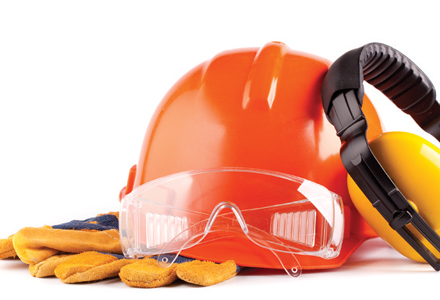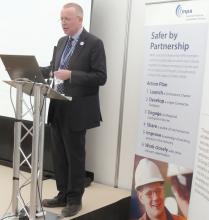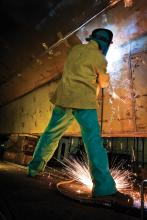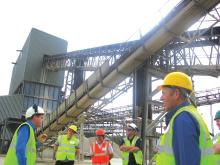
Sometimes it is just simple things that can place people at risk of an accident. ABE takes a look at the role of site assessment and auditing in maintaining high standards
Achieving high levels of safety in a quarry environment calls for continuous action to maintain safety precautions and awareness of the risks. It is all too easy for workers to become familiar with their surroundings and fail to notice a slight slip in standards that can lead to an accident.
Many quarry companies in Europe undertake regular site assessments and conduct safety audits as a measure of quality control when it comes to safety and reducing risk. Introducing such systems is very easy but is only effective.
if they are carried out according to schedule and any problems they raise are acted upon.
In order to assess site safety and carry out audits, quarry operators need to set out standards based on an assessment of the risks involved which allow performance to be benchmarked and improvements tracked.
"Risk assessment is the cornerstone of the European approach to occupational safety and health," said European agency for health and safety at work director Jukka Takala. "If the risk assessment process is not done well or not done at all, the necessary preventive measures are unlikely to be identified or put in place. And accidents and illnesses are costly." By setting out standards against which safety performance is measured, objectives can be set that identify hazards and access risks while building a positive culture and controlling the risks. Safety standards should set out for who should do what and when, but they must be measurable, achievable and realistic.
It is impossible to set blanket standards saying that all staff must be trained or all machines must be guarded. Standards have to be based on risk assessments and implementing the necessary controls to reduce these risks and to meet local health and safety legislation, or company standards if these are higher than the local ones.
"When they are deciding on a strategy to eliminate or control the risks that the risk assessment has identified, employers should bear in mind the general principles of prevention: they should avoid risk, combat risk at source; replace the dangerous by the non-dangerous or the less dangerous and adapt the work to the individual," said Takala. "Apart from their moral responsibilities to keep workers safe, employers in the EU have a legal duty to protect their employees." An initial audit will provide a guide as to what a site's health and safety performance is like and it must then be established what the aim is in each area and a timescale in which the target is to be achieved. Getting staff involved is essential to improving health and safety, particularly where it involves people changing habits, so communicating why the change is needed and getting people onboard is a key part of making the improvements achievable.
Regular assessment of the quarry site is an important part of the process as active monitoring enables companies to put things right before an accident happens.
Unfortunately, despite having a robust policy and procedure in place accidents do sometimes still happen and in these situations reactive monitoring is important to ensure lessons are learnt and the same problem does not happen again by changing or amending standards.
Ongoing monitoring will enable improvements to be tracked to check the reliability of safety policies and ensure the system is actually achieving the right result.
"Risk assessment can be a challenge, especially for small businesses, but it need not be so," said Takala. "Risk assessment is not necessarily complicated, bureaucratic, or a task only for experts. A simple, step-by-step approach is often all that is needed, and many resources and examples of good practice are available, to help make the process easier.
The guiding principles that should be considered throughout the risk assessment process can be broken down into five steps: identifying hazards and those at risk; evaluating and prioritising risks; deciding on preventive action; taking action; and monitoring and reviewing."








